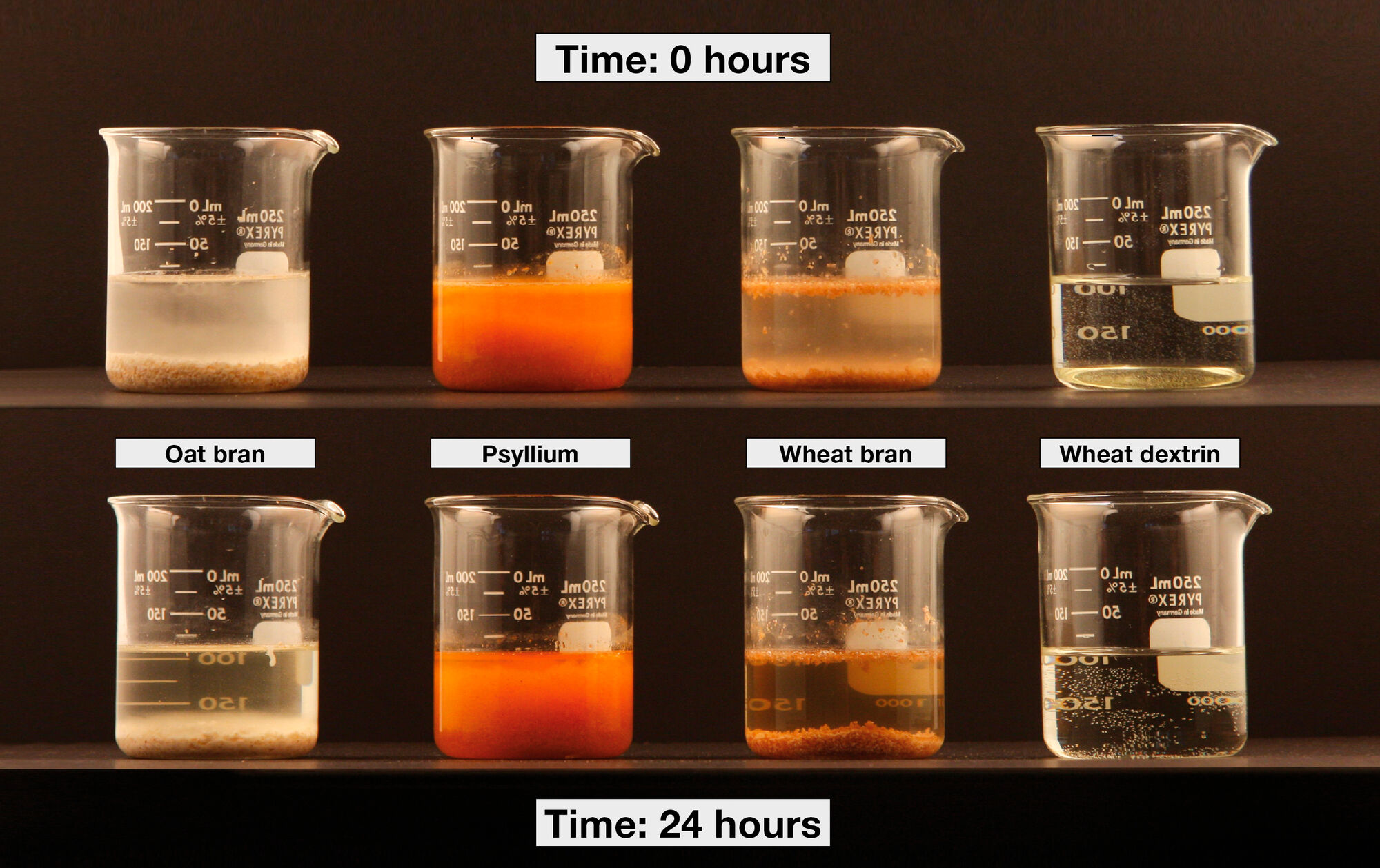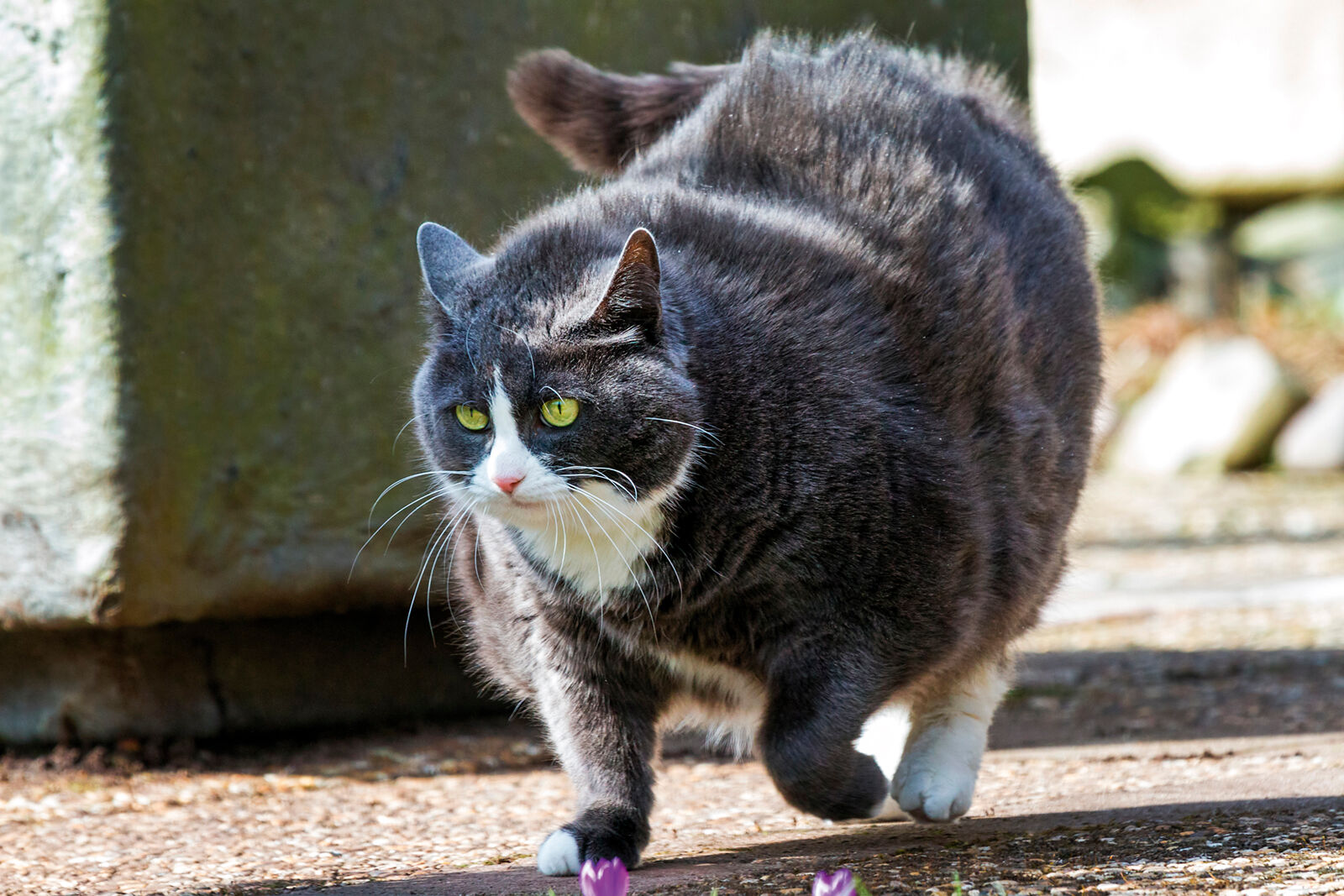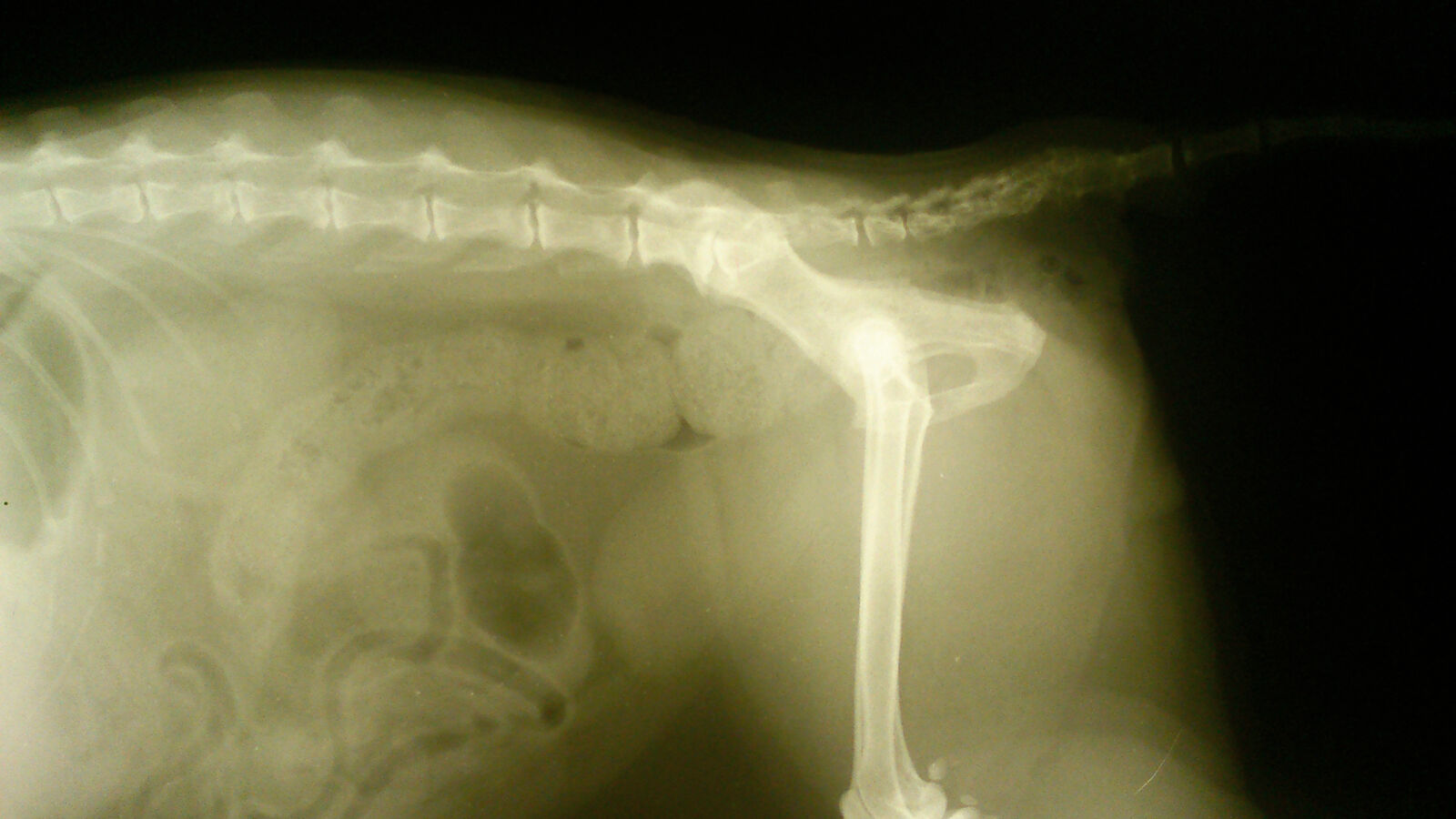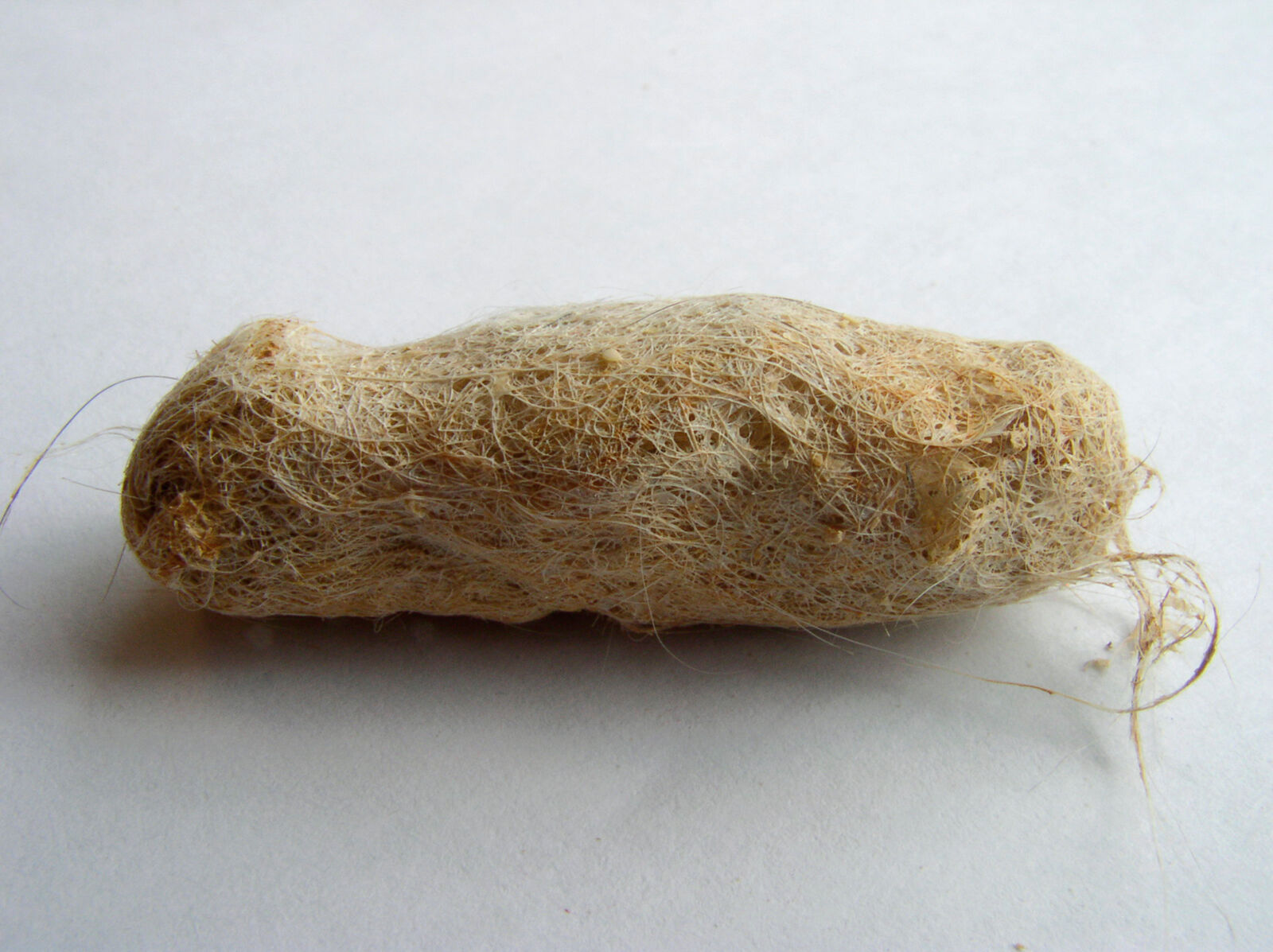Cats and dietary fiber
Written by Allison Wara and Craig Datz
Nutritionists and veterinarians have been interested in dietary fiber as a component of pet foods or as a supplement for many years. Fiber has traditionally been used to modify stool quality and as an aid in weight management, but more recently fiber has been shown to have effects on the gastrointestinal microbiome and may play a role in the management of various disorders.
Article

Introduction
Nutritionists and veterinarians have been interested in dietary fiber as a component of pet foods or as a supplement for many years. Fiber has traditionally been used to modify stool quality and as an aid in weight management, but more recently fiber has been shown to have effects on the gastrointestinal microbiome and may play a role in the management of various disorders. This article offers a brief overview of dietary fiber and a discussion of the potential benefits for several common feline medical conditions.Definition
Dietary fiber is often classified by its properties, such as solubility in water, viscosity, and fermentability in the gastrointestinal tract. Table 1 summarizes the characteristics of common fiber sources used in pet food. It can be difficult to predict the health effects of any one fiber source, and many commercial cat foods include two or more fiber-containing ingredients. For example, fermentable fibers can act as energy substrates for bacteria in the lower intestinal tract which results in the production of short-chain fatty acids [3]. These in turn are absorbed and can modify the structure and function of intestinal cells. Nonfermentable fibers tend to increase fecal weight and volume and may decrease intestinal transit time [3]. Fiber sources with high viscosity often have an increased water-binding capacity that can result in softer, moister feces. It is likely that varying the amounts and types of fiber will affect a cat’s gastrointestinal microbial population, although research into the microbiome is in its early stages [4]. Figure 1 illustrates the solubility and viscosity of different fiber sources.
| Source | Solubility | Viscosity | Fermentability |
|---|---|---|---|
| Beet pulp | Low | Low | Moderate |
| Bran | Low | Low | Moderate |
| Cellulose | Low | Low | Low |
| Guar gum | High | High | High |
| Pectin | High | High | High |
| Psyllium | Moderate | High | Moderate |
| Soybean hulls | Low | Low | Low |

Fiber and its role in disease
Obesity
In North America, obesity is the most common form of malnutrition in veterinary patients; it is estimated that 35.1% of adult cats are either overweight or obese [5] (Figure 2). Obesity predisposes cats to a variety of diseases such as diabetes mellitus, hepatic lipidosis, urinary tract disease, orthopedic disease, and dermopathies.

Dietary fiber has been used to help manage obesity in both dogs and cats. In particular, slowly fermentable fibers such as cellulose and peanut hulls have been shown to be an effective means of increasing dietary bulk in the gastrointestinal (GI) tract without supplying additional calories. Sources of dietary fiber in commercial pet foods can thus be beneficial, as they are likely to result in the consumption of less food energy. Mixed dietary fibers are also thought to promote the attenuation of glucose absorption from the GI tract, induce gastric distention which stimulates the cholecystokinin-satiation signaling pathway, delay gastric emptying, and stimulate longer ileal transit time [6]. While the effects of fiber on food consumption in cats are not well described in the literature, there is speculation that fiber-enhanced diets might reduce overeating and thus play a protective role against the development of feline obesity [7].
Hunger-driven begging behaviors often compromise client compliance and can result in failure to achieve weight loss in obese-prone individuals. The inclusion of fiber in commercial diets is thought to induce satiety to the extent that it decreases these unwanted behaviors. A study evaluating weight-loss strategies in overweight cats found reduced begging scores (less vocalization and owner-seeking behavior) with a diet containing high-water-binding capacity fiber compared with a diet containing primarily insoluble fiber [8]. Therefore, not only the amount but the type of fiber may have an effect on satiety.
Despite the potential therapeutic properties of fiber on obesity, it should be noted that its inclusion can also result in decreased protein digestibility; weight loss diets must compensate for this by increasing dietary protein concentrations. Moreover, the ratio of slowly to rapidly fermentable fibers is important because research has shown that when rapidly fermentable fibers are included in high concentrations sufficient to promote satiety, GI side effects such as flatulence and diarrhea may be seen [9]. Overall, despite the paucity of information available on fiber in feline patients and conflicting results on its efficacy, its inclusion in commercial diets may prove useful for weight loss in obese-prone patients.
Diabetes mellitus
In one randomized controlled crossover study [12], 16 diabetic cats were fed a high-fiber (HF) diet containing 12% cellulose (dry matter basis) or a low-fiber (LF) diet (added cornstarch). Pre- and post-prandial blood glucose measurements were lower when the cats ate the HF diet. Insulin doses and glycated hemoglobin concentrations were not significantly different and 4 cats did not show improvement in blood glucose on the HF diet. The authors concluded that the results supported feeding a diet with added cellulose to cats with DM. These data were consistent with an unpublished study conducted by the same authors, in which 9 of 13 diabetic cats had improved glycemic control on a HF diet. However, there were other differences between the two study diets that may have influenced the results; the LF diet was lower in protein and higher in carbohydrates than the HF diet, and caloric intake was reduced on the HF diet. The four cats that did not respond to the HF diet had a lower average body weight (4.7 kg vs. 5.5 kg), so the amount of body fat may be a significant variable [12].
Constipation

Recommendations for nutritional therapy of constipation vary widely. Some authors suggest highly digestible, low-fiber diets, while others prefer high-fiber diets or fiber supplementation [17]. Different types and amounts of dietary fiber have different effects on large intestinal function. Certain poorly fermentable fibers such as cellulose act as bulk-forming laxatives and can help distend the lumen of the colon and increase the rate of fecal passage [17]. However, cellulose has different effects on fecal dry matter and quality in dogs depending on type and fiber length [18]. Other fibers such as psyllium can form a viscous gel (because of its high water-binding capacity) which helps ease the passage of feces. Diets that are low in fiber and highly digestible can reduce the amount of feces produced but do not stimulate motility or fecal passage [17]. As dehydration is one of the underlying causes of constipation, wet (canned) diets are often suggested to increase water intake along with parenteral fluid therapy when necessary. However, wet diets vary in fiber types and amounts and may not be appropriate for all cats with constipation.
Only one study has been published looking at the effects of a commercial diet in constipated cats [19]. In this uncontrolled clinical trial, a moderate-fiber dry commercial diet containing psyllium as the predominant fiber (along with other fiber sources including chicory, fructo-oligosaccharides, mannan-oligosaccharides, rice and corn) was fed to 66 constipated cats. Assessments of fecal consistency and subjective improvement in clinical signs were evaluated by both veterinarians and owners. The results indicated that 56 cats completed the trial and all ate the diet and had improvements in fecal scores. Most cats that were on current medications for constipation were able to decrease or stop the drugs completely. While there was no control group or diet in this study, the positive results support the use of this psyllium-enriched diet as a primary or adjunctive therapy in managing cats with constipation and obstipation [19].
Hypercalcemia
Hairballs

Commercial hairball control diets are available that include various types and amounts of fiber. A survey of dry and wet feline diets with hairball claims available in the U.S. found that the fiber sources listed among the ingredients varied widely, and included powdered cellulose, dried beet pulp, soybean hulls, dried chicory root, rice hulls, rice bran, pea bran meal, pea fiber, oat fiber, inulin, and psyllium. Published studies are lacking. A crossover trial comparing a maintenance diet with one with added fiber in 102 cats over 2 months showed an average of 21.5% fewer hairballs and 21.8% reduction in vomiting frequency [24]. Another research study in 16 healthy cats compared the effect of two dry diets, one moderate fiber (6.9% as fed) and one high fiber (14.2%), on fecal hair excretion [25]; after 3 weeks, cats on the high fiber diet excreted an average of twice as much hair as cats on the moderate fiber diet. The results indicated either the amount or the type (psyllium and cellulose) of fibers in the high-fiber diet increased hair passage through the intestinal tract and may reduce the incidence of hairball regurgitation or vomiting.
Conclusion
Both the amount and type of dietary fiber in the diet can impact on intestinal health and function, and have been shown to play a beneficial role in the treatment of various clinical conditions. Further studies are needed to determine the effects of specific diets and fiber supplementation in cats.References
- Cho SS, Almeida N (eds). Dietary fiber and health. Boca Raton, FL: CRC Press, 2012;219-239.
- <div>2014 Official Publication. Association of American Feed Control Officials Incorporated:346.</div>
- <div>Case LP, Daristotle L, Hayek MG, et al. Canine and feline nutrition. 3rd ed. Maryland Heights, MO: Mosby Elsevier, 2011;13-16.</div>
- Barry KA, Wojcicki BJ, Middelbos IS, et al. Dietary cellulose, fructo-oligosaccharides, and pectin modify fecal protein catabolites and microbial populations in adult cats. J Anim Sci 2010;88:2978-2987.<br>
- <div>Lund EM, Armstrong PJ, Kirk CA, et al. Prevalence and risk factors for obesity in adult cats from private US veterinary practices. Intern J Appl Res Vet Med 2005;3:88-96.<br></div>
- <div>Gross KL, Yamka RM, Khoo C, et al. Macronutrients, in: Hand MS, Thatcher CD, Remillard RL, Roudebush P (eds). Small animal clinical nutrition. 5th ed. Topeka, KS: Mark Morris Institute, 2010;49-105.</div>
- <div>Backus R. Management of Satiety. WALTHAM Focus 2006:16(1):27-32.<br></div>
- <div>Bissot T, Servet E, Vidal S, et al. Novel dietary strategies can improve the outcome of weight loss programmes in obese client-owned cats. J Feline Med Surg 2010;12(2):104-12.<br></div>
- <div>Fahey GC, Merchen NR, Corbin JE, et al. Dietary fiber for dogs: I. Effects of graded levels of dietary beet pulp on nutrient intake, digestibility, metabolizable energy and digesta mean retention time. J Anim Sci 1990;68:4221-4228.<br></div>
- <div>Zicker SC, Ford RB, Nelson RW, et al. Endocrine and lipid disorders, in: Hand MS, Thatcher CD, Remillard RL, et al (eds). Small animal clinical nutrition. 4th ed. Topeka, KS: Mark Morris Institute, 2000;855.</div>
- <div>Fascetti AJ, Delaney SJ. Nutritional management of endocrine diseases. In: Fascetti AJ, Delaney SJ (eds). Applied veterinary clinical nutrition. Ames IA: Wiley-Blackwell, 2012;291-292.<br></div>
- <div>Nelson RW, Scott-Moncrieff JC, Feldman EC, et al. Effect of dietary insoluble fiber on control of glycemia in cats with naturally acquired diabetes mellitus. J Am Vet Med Assoc 2000;216:1082-1088.<br></div>
- <div>Bennett N, Greco DS, Peterson ME, et al. Comparison of a low carbohydrate-low fiber diet and a moderate carbohydrate-high fiber diet in the management of feline diabetes mellitus. J Feline Med Surg 2006;8:73-84.<br></div>
- <div>Evert AB, Boucher JL, Cypress M, et al. Nutrition therapy recommendations for the management of adults with diabetes. Diabetes Care 2014;37:S120-S143.<br></div>
- <div>Sunvold GD, Fahey GC, Merchen NR, et al. Dietary fiber for dogs: IV. In vitro fermentation of selected fiber sources by dog fecal inoculum and in vivo digestion and metabolism of fiber-supplemented diets. J Anim Sci 1995;73:1099-1119.<br></div>
- <div>Burrows CF, Merritt AM. Influence of alpha-cellulose on myoelectric activity of proximal canine colon. Am J Physiol 1983;245:301-306.<br></div>
- <div>Davenport DJ, Remillard RL, Carroll M. Constipation/obstipation/megacolon, in: Hand MS, Thatcher CD, Remillard RL, et al (eds). Small animal clinical nutrition. 5th ed. Topeka, KS: Mark Morris Institute, 2010;1120-1123.</div>
- <div>Wichert B, Schuster S, Hofmann M, et al. Influence of different cellulose types on feces quality of dogs. J Nutr 2002;132:1728S-1729S.<br></div>
- <div>Freiche V, Houston D, Weese H, et al. Uncontrolled study assessing the impact of a psyllium-enriched extruded dry diet on faecal consistency in cats with constipation. J Feline Med Surg 2011;13:903-911.<br></div>
- <div>Parivar F, Low RK, Stoller, ML. The influence of diet on urinary stone disease. J Urol 1996;155:432-440.<br></div>
- <div>McClain HM, Barsanti JA, Bartges JW. Hypercalcemia and calcium oxalate urolithiasis in cats: A report of five cases. J Am Anim Hosp Assoc 1999;35:297-301.<br></div>
- <div>Midkiff AM, Chew DJ, Randolph JF, et al. Idiopathic hypercalcemia in cats. J Vet Intern Med 2000;14:619-626.<br></div>
- <div>Cannon M. Hairballs in cats. J Feline Med Surg 2013;15:21-29.<br></div>
- <div>Hoffman LA, Tetrick MA. Added dietary fiber reduces feline hairball frequency. In Proceedings. 21st Annual ACVIM Forum, 2003;431.</div>
- <div>Tournier C. Validation d’une stratégie alimentaire innovante pour stimuler l’élimination fécale des poils ingérés par les chats. In Proceedings. 9th ESVCN Congress, 2005.</div>
Allison Wara
DVM
United States
Dr. Wara graduated from the Atlantic Veterinary College in Prince Edward Island, Canada in 2010. She then worked for two years in first opinion small animal practice, where she developed a strong interest in small animal nutrition. In 2012 she left to pursue a residency training program in Clinical Nutrition at the University of Missouri College of Veterinary Medicine. Following the completion of her residency in 2014, she joined the MU faculty as a Clinical Instructor in the Department of Veterinary Medicine and Surgery.
Craig Datz
DVM, MS, DABVP, DACVN
United States
A 1987 graduate of the Virginia-Maryland Regional College of Veterinary Medicine, Dr. Datz has worked in both private companion animal practice and at the University of Missouri College of Veterinary Medicine, where he taught primary care and nutrition. He completed a master’s degree and a residency in Clinical Nutrition in 2010 and is dually board-certified in canine/feline and feline practice by the American Board of Veterinary Practitioners. Dr. Datz is currently the nutrition and scientific affairs manager for Royal Canin USA and is also an adjunct associate professor at the University of Missouri.
Other articles in this issue
Share on social media